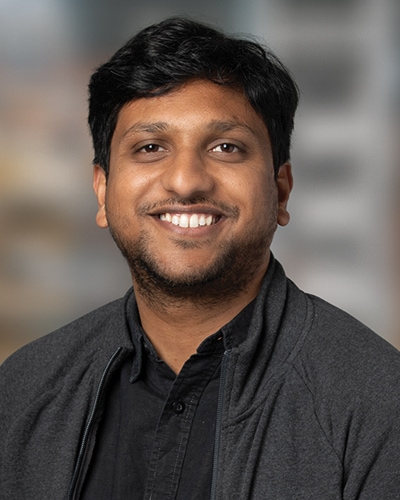Supply Chain Automation and Robotics Converge in the Warehouse

GreyOrange CEO Akash Gupta on how he knew supply chain automation and warehouse robotics were key to the evolution of logistics and why he encourages his leadership team to spend as much time as possible with current and prospective customers.

Akash Gupta, CEO & Co-Founder, GreyOrange
Akash Gupta and Samay Kohli were barely out of college when they co-founded robotics and AI firm GreyOrange. From that start in 2012, the company, now based in Atlanta, has become a major force in supply chain automation, with operations across the Americas, Europe, and Asia.
“In 2012, supply chain was not as sexy as it is today,” says Gupta, who took over from Kohli as CEO of GreyOrange in 2023. “It was still a back-end function and a pure bottom-line driver rather than a top-line driver.” The world has changed since then, and demand for GreyOrange’s solutions has soared.
Gupta filled us in on the company’s history and recent activities and shared some insight into his leadership.
IL: When you and Samay Kohli founded your robotics business, why did you choose logistics as its focus?
In 2012, digitization was transforming manufacturing just as ecommerce was revolutionizing consumer behavior. We predicted that the supply chain, which connects the manufacturing and consumer ecosystems, would have to evolve quickly as well. That was a global problem.
Also, we realized that warehouses badly needed to be automated in two ways: to reduce manual labor and walking, and to become less dependent on human decisionmaking. We were intrigued to find an industry that needed a combination of robotic automation and software automation.
IL: Tell us about an event early in your career that taught you an important lesson.
Our first product was a sortation system. The launch was beautifully successful; it took just a few months to sell systems to two large companies in India. But then we had to spend 12 to 18 months refining those systems, because what you think you have on paper is very different from what happens in the warehouse. That experience taught us a lot of things that two engineers getting out of college needed to know.
And those lessons paid off extremely well. One of our first customers was the ecommerce company Flipkart. We worked very hard to make sure their peak season went well, and they turned into an amazing customer reference for us. The next season, we sold 37 sortation systems and went from $500,000 in revenue to between $10 million and $12 million.
IL: What keeps your customers awake at night?
Three things. First is how to develop a technology platform that will give their customers the right experience. Second is, once they’ve identified how to deliver that experience, how do they quickly scale up the solution to cover the whole enterprise? Third, how do they stay agile, so they can respond to any sort of event, from a pandemic to unexpected changes in consumer demand?
IL: Do customers bring any unusual challenges to GreyOrange?
One customer was shipping 80% of its volume to retail stores and 20% to ecommerce consumers from one facility. We designed a system to support that volume. Then COVID hit, and they asked us to flip the system to 80% ecommerce and 20% retail.
That was a drastic request, but fortunately we had been designing our solutions to accommodate a change in channel mix. We were able to reconfigure their system in a few days.
IL: What would we see if we followed you around at work?
I spend 50% of my time with current and prospective customers; I try to visit three or four customer sites every 15 days. Another 30% of my time I spend talking to folks in the company, including my direct reports and people at the execution level. And I probably spend 20% of my time putting out fires and making sure we keep the lights on.
IL: How would you describe your leadership style?
I’m fairly detail-oriented. I try to be as intellectually honest as possible, and I want everybody to do the same. I like to hear bad news as quickly as possible, so we can do something about it. Once we make a commitment to a customer, I go very far to make sure we keep that commitment.
IL: How do you nurture talent on your team?
Because it’s so important to understand our customers and their problems, I encourage team members to visit customer sites. I make sure that they feel comfortable trying new things and making mistakes, but also that they have a clear view of what is important, what is reversible, and what is irreversible.
These people have attained their roles because they’re capable, but through all the chaos of running a business, they need to be self-aware. It’s important to help them with that.
IL: What’s new and interesting at GreyOrange these days?
We’re making sure that each member of our leadership team spends time in one of our customers’ warehouses. And we’ve recently expanded the focus of our solutions from just the warehouse to the larger challenge of omnichannel execution, including in-store inventory.
IL: How have you been influenced by a mentor or role model?
I’ve had several mentors, but one who taught me a particularly interesting lesson was Thomas Chance, the CEO of C&C Technologies, where Samay and I did internships. We worked closely with him on a few projects, and he was kind enough to tell us about his experiences. He emphasized that you have to respect Murphy’s Law: If something can go wrong then it will go wrong, so it’s important to be well prepared.
IL: Is there something you believed strongly at the start of your career that you’ve changed your mind about?
When you start out, what’s most important is to get the technology or the product right. But the crucial thing is to get the people right. The value of having people who align on the company’s vision, culture, and behavior is even greater than the value of a good product or technology.
IL: Outside of work, how do you like to spend your time?
I love taking drives to remote places. I also love attending all kinds of musical performances. And spending as much time as possible with family is always on my priority list.
Keep Moving Forward
Looking back at his entrepreneurial journey so far, the characteristic that strikes Akash Gupta as most important is a bias toward action.
“You start your day with 10 decisions to be made,” Gupta explains. “No matter what happens, a few of those decisions will be wrong.”
But you can’t let fear of those inevitable errors keep you from moving forward. “You’ll never have enough information to make the perfect decision,” he says. “You just need to trust that you are making more right decisions than wrong ones.”
